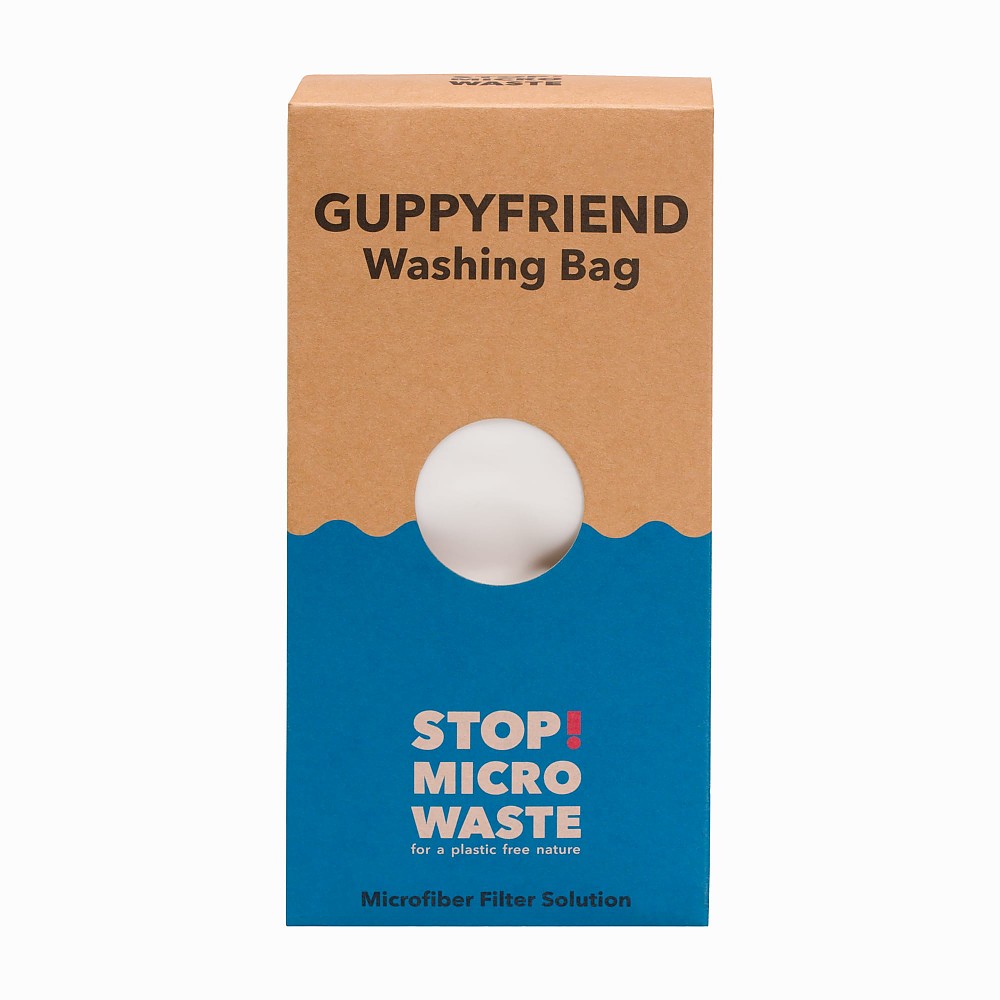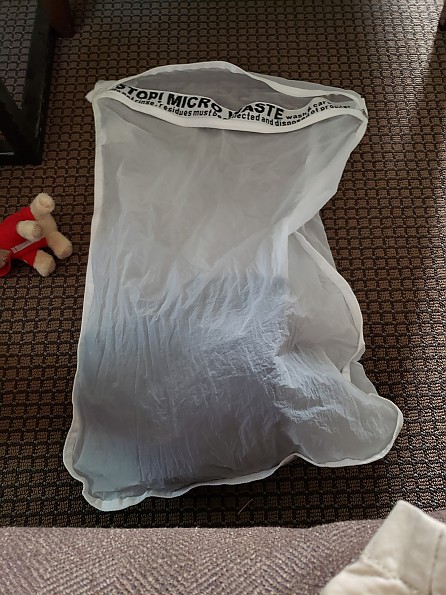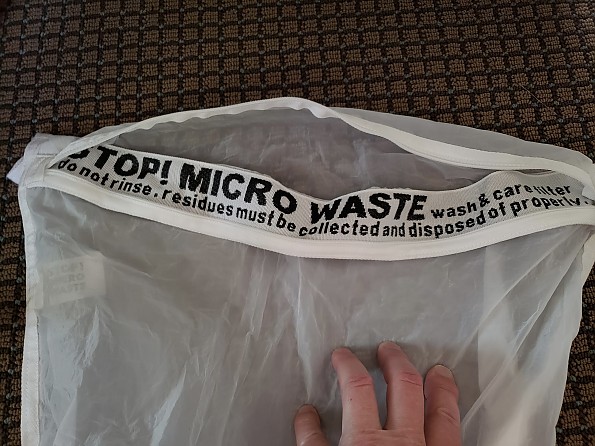Guppyfriend Washing Bag

The Guppyfriend helps prevent your fleece gear from spewing micro fibers into the water supply. The concept is pretty simple—a bag with pores too fine to allow micro fibers out, but water gets in during a normal wash cycle to clean your fleece. Cleaning micro fibers out of the bag is a bit of a chore. I have used this a number of times, and it seems durable.
Pros
- Great for the environment
- Garments get clean
- Durable
- Good size for cleaning larger garments
Cons
- Cleaning micro fibers out is annoying
- Best to remove sticks and brambles first
January 2025 update:
I continue to use this bag to launder fleece. It's effective for washing two medium weight or one thicker/heavier fleece. I washed a fleece top (baselayer-weight) and bottom in it today. I run extra rinse to ensure detergent gets fully removed, and I have been running each fleece 12 minutes in a dryer to damp dry them, then hang them to fully dry.
To clean the bag, I wait until it dries, turn it inside out, and either shake the lint/residue off or dustbust it.
Positive observations about durability—this has run through regular laundry cycles dozens of times. I don’t use it in the dryer, as any excess micro-sized pieces of fleece land in the lint trap, not the water supply. The fabric, seams, zipper are all in great shape, function as new.
xxxxx
original review:
I read a few articles recently about how detrimental nylon and polyester micro fibers are to fish and other organisms that live in the water, and about how the fleece I wear a lot contributes to this problem. While I like wool layers and sweaters as alternatives to synthetic, wool isn’t as efficient at wicking moisture, takes longer to dry, and often isn’t as durable as synthetic insulating layers, and wool generally feels heavier.
In search of a simple solution, I found the Guppyfriend washing bag. I purchased it on Patagonia’s website, and it makes sense that a leading maker of fleece would offer a product like this, but this is an independent company as far as I can tell. Profits from the sale of the Guppyfriend go to Stop! Micro Waste and Stop! Plastic Academy. (Stop! Micro Waste is a non-profit dedicated to avoiding, replacing, and re-using plastics).
There are other similar kinds of bags from other sources and much more complicated solutions, like attaching a special filter to the waste water output from your washing machine.

It’s very simple to use. Drop your soiled or smelly fleece inside, zip it shut, wash/dry, or wash and hang the fleece to dry. (I hang all fleece up, hot dryers don’t do fleece any favors). A very soiled fleece with chunks of dirt/stones, brambles, sticks clinging should get hosed down before using the bag, because anything like that will end up stuck in the bag with your fleece.
According to literature I read online, the bag not only catches micro fibers but also reduces agitation forces on your fleece because it’s encased in a bag—which helps preserve your fleece and limit microfiber shedding.
Worth noting that washing fleece in cool water and air drying it helps it shed less micro fibers, so does running fleece in a slower spin cycle and using a front-loading washer.

Cleaning microfibers out of the Guppyfriend is a bit of a chore. When I have used the bag, microfibers don’t tend to collect in clumps—they are scattered about the inner surface of the bag. Shaking the bag out doesn’t work because the fibers tend to cling, so getting the fibers out means using your hands or a small vacuum (dustbuster?) to manually remove the microfiber residue. One solution I have not yet tried is flipping the bag inside out and letting the micro fibers go into the dryer lint trap; I’m concerned repeated heated drying cycles would degrade the bag.

After cleaning it, hang the bag. It dries very quickly.

Takeaways? For about $35, you can support a nonprofit organization and a good cause, do your part to improve the environment, and prolong the life of your favorite fleece or other synthetic hiking gear when you clean it.
Background
Roughly a half dozen wash cycles with stinky or soiled synthetic layers in the bag.
update: now used at least 50 times.
Source: bought it new
Price Paid: $34.95
Your Review
Where to Buy
You May Like
Specs
| Price |
MSRP: $34.95 Current Retail: $34.95 Historic Range: $29.00-$34.95 Reviewers Paid: $34.95 |
| Size |
29.1 x 19.7 in / 74 x 50 cm |
| Material |
polyamid 6.6 untreated |




